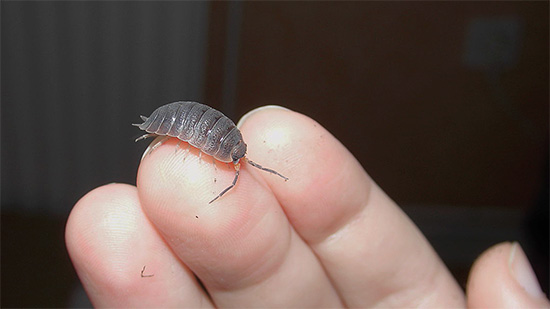
Woodlice as a whole are an integral and quite important part of many natural communities. With the advent of human settlements and cities, they were quite successfully able to integrate into the urban landscape and found quite comfortable conditions for their life here. Moreover, woodlice eat a very diverse diet and can feel provided with food almost everywhere.
Food habits played an important role in the rapid adaptation of wood lice to human settlements: we can say that these creatures can almost always and everywhere find something edible for themselves. Suitable food for them is available on agricultural lands, and in parks and city squares, and directly near city houses, in basements, attics, or even in our bathrooms and toilets.

Not surprisingly, wood lice can be found almost everywhere. But at the same time, they do not particularly catch the eye - their nocturnal lifestyle, secrecy and love for dampness affect. Sometimes, even where there are a lot of wood lice, you can not suspect their existence for a long time.
The owners of the same garages or cellars, as a rule, discover "strange insects" by chance, with surprise finding their whole clusters under various objects standing on the floor or ground.Here, woodlice eat, breed and lead their active, albeit inconspicuous life.
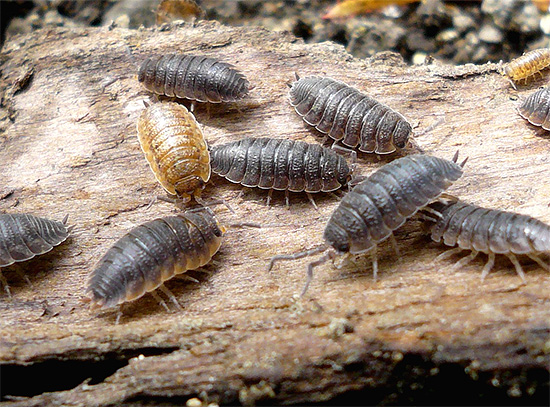
On a note
Woodlice are not insects - they belong to the class of crustaceans.
The diet of wood lice: simplicity and a minimum of calories
The vast majority of woodlice eat plant foods. However, it is also worth mentioning large deep-sea decapod crayfish: they, strictly speaking, do not even belong to woodlice, but are very similar to them and are often referred to as giant woodlice. These creatures also eat mainly algae, benthos, the remains of various dead animals, but they can also eat live holothurians, sea anemones, and other marine life with a soft body, unable to move.
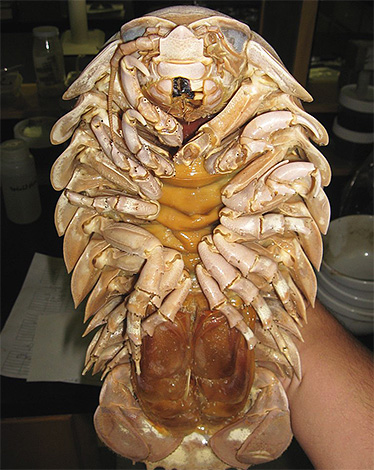
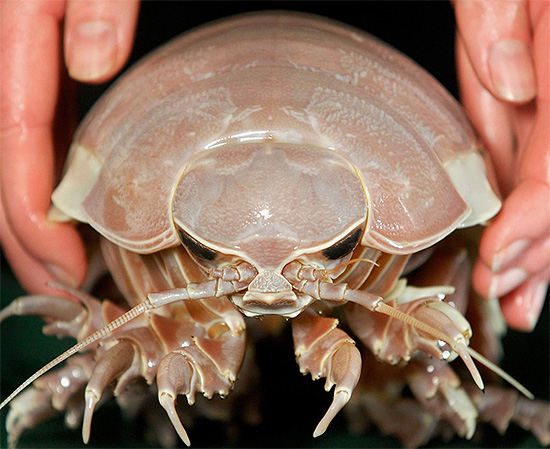
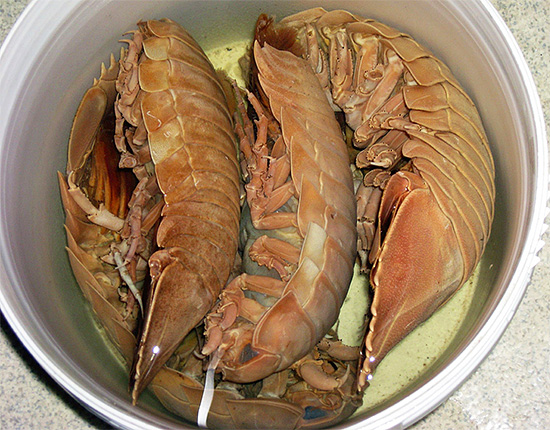
Most woodlice are typical processors of dying and rotting plants. In forests, fields, plantings and even deserts, they feed on parts of withering plants, their roots, rotting fruits, seeds and falling leaves. Considering that there are a lot of such organic matter in nature, wood lice, as a rule, have no problems finding food.
Most often, wood lice find their food under stones, under old snags or under fallen leaves. Here, away from the sun's rays, plant materials are available and rot more easily, while the crustaceans themselves are safer and less accessible to predators.
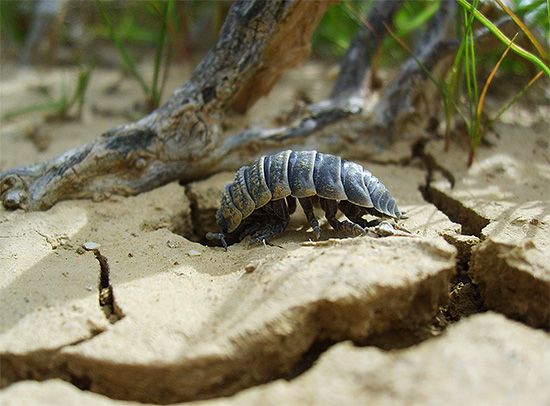
On a note
Bacteria that can digest cellulose fibers live in the digestive tract of woodlice. They are not as versatile as termite symbiont bacteria, but still ensure the normal assimilation of rather coarse parts of plants.
Generally speaking, wood lice are real minimalists in terms of the type of their diet. Their food is quite low in calories and contains very little fat.
As a rule, wood lice feed, practically without harming living plants and usually content with the fact that it itself falls and begins to rot (however, there are exceptions when these creatures, picky in food, still damage the living parts of garden plants, causing them harm).

Thanks to this way of feeding, woodlice turn out to be very useful organisms for biocenoses, processing and utilizing large amounts of decaying plant residues.
How about abroad?
It is interesting that the woodlice that inhabit the tropical regions of the globe are no different from domestic "watermelons" in their food preferences. They also crawl under the forest floor, old stumps and stones, and at night they crawl along the damp ground, looking for fallen fruits and seeds.

In the tropics, due to greater biodiversity, woodlice have a much wider food base: here decaying plant organic matter is found in abundance, and requires more "scavengers". Correspondingly, woodlice in tropical forests are more numerous, represented by a greater number of species, and are generally larger in size. Although, they still do not grow more than 5-6 centimeters.
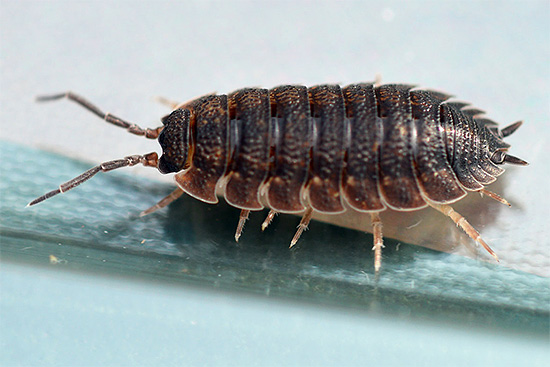
There are also several species of woodlice that have returned to their original element of crustaceans - to fresh and salt water bodies. Staying close to the coast, these species eat decaying remains of plant and animal origin.
Enemies of wood lice: for whom "watermelons" are a delicacy
But the wood lice themselves are good food for a large number of animals.Even though their body, it would seem, is reliably protected by a hard chitinous shell, and in case of danger they can curl up into a ball, protecting a softer abdomen, they are caught and eaten with pleasure by the following living organisms:
- Large insects - predatory beetles, flies, wasps.
- Spiders - there is even a species of spider Dysdera crocata, which specializes in feeding on wood lice. It has elongated chelicerae, and is able to bite even a curled up "watermelon" between the shields of the shell.
- Amphibians and reptiles. Perhaps only newts and salamanders do not eat terrestrial crustaceans very often. Frogs, toads, lizards and small snakes are happy to eat wood lice, especially young and soft ones, and for some species these creatures are even the basis of the diet.
- Birds, especially small owls, feed just when wood lice are actively crawling on the surface of the soil.
- Mammals - shrews, hedgehogs, rats.
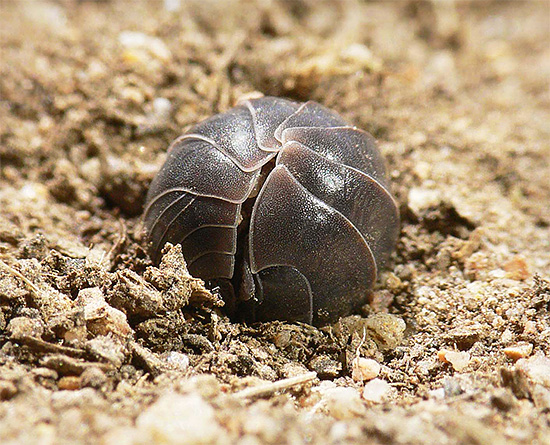
Many terrariumists (amateurs and professionals who keep lizards, snakes, spiders at home) keep wood lice in special cages, breeding them as a source of food for their pets. Compared to crickets, cockroaches and mealworms, shelled crustaceans are of course less attractive food, but they are quite suitable as an additional dietary variety.
There are even techniques for breeding woodlice together with their natural enemies in the same terrarium. These crustaceans are very convenient to keep, because they do not impose special requirements on the microclimate, and feed on any food waste of plant origin.
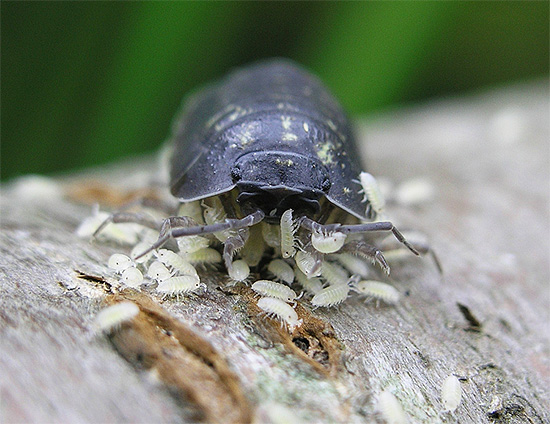
What do wood lice eat in houses and apartments
It should be understood that in a person’s dwelling and near him, wood lice do not change their “food addictions”. Here they also find rotting plant remains, and sometimes those that the owners of the dwelling are not even aware of.

There are no problems with food for wood lice that live in cellars with leaking pipes. Here, seeds flying through the cracks constantly germinate, mold and lichens grow. And although this is not a very plentiful and nutritious food, it is enough for wood lice. Moreover, sometimes this allows them to breed in huge numbers, after which they begin to occupy the lower apartments.

On a note
There are cases when the residents of the lower apartments, due to the constant penetration of wood lice from the basement, had to wage a long struggle with these arthropods - no less intense than, for example, with cockroaches.
Do not confuse wood lice with silverfish. The latter, on the contrary, like dryness, and feed on sugar and groceries in the dust. Correct identification of arthropods in the apartment will help make the fight against them more effective.
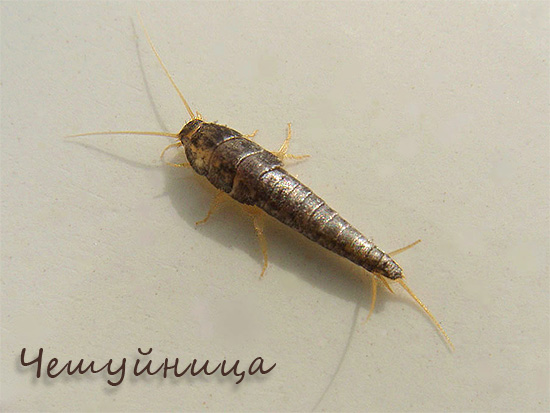
Woodlice live more luxuriously in rural cellars: here they constantly feed on wilted potatoes, sprouting onions, and carrots. Sometimes they are content with the same feed on the balconies of apartments.
In toilets and bathrooms, wood lice can live well only if these rooms always maintain a high level of humidity (poor ventilation, leaking pipes, mold in the corners). Therefore, remember: if there are wood lice in the house, the sanitary situation in it requires urgent intervention.

It also happens that wood lice multiply en masse in the attics of houses with a leaky roof, and then through cracks and ventilation ducts they penetrate toilets, bathrooms, and the kitchen.Even if your apartment is relatively dry, but the attic is already overpopulated with crustaceans, then in this case, wait for the “guests”.
A useful video on how to deal with wood lice in an apartment: some effective recipes
An example of how residents of a house suffer from an invasion of wood lice

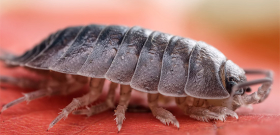

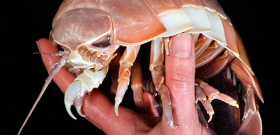
Excellent article, very touching warm "watermelon". I agree with the author and find wood lice very charming.